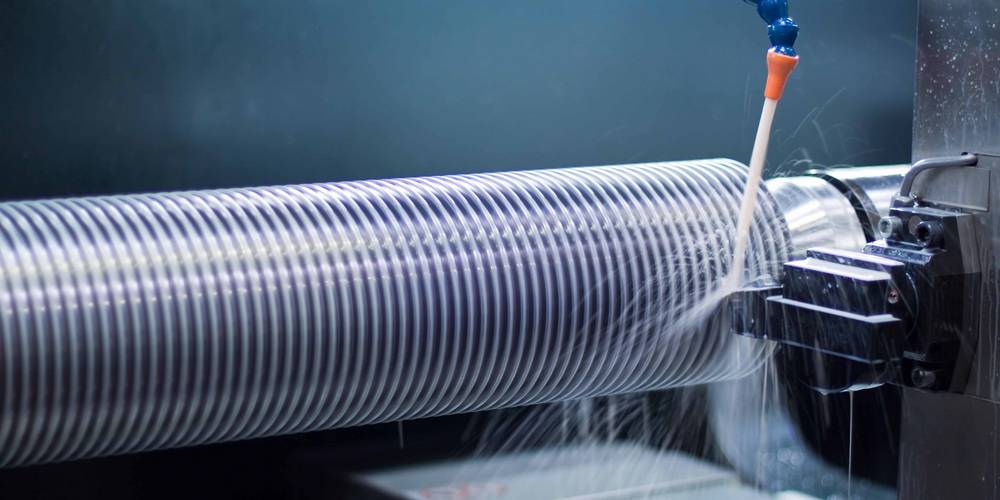With the last article in our series on Lift table types and their advantages and disadvantages , we would like to give you an understanding of spindle lifting tables.
How it works
The basic principle of a spindle lift table can easily be explained using a nut and bolt. If the bolt is turned around its own axis, the nut moves in the direction of the bolt axis.
In a spindle lift table, the support nut is connected to one of the two scissor halves. The counterpart is located on the other scissors half. The bolt axis or the lifting spindle is turned by means of an electric motor. Depending on the direction of rotation, the scissor is set steeper or flatter and the load is raised or lowered.
The design of the spindle lift table became popular in the early nineties. At that time, mainly self-locking trapezoidal spindles were used to meet the safety requirements. However, the use of trapezoidal spindles has dropped steadily since the mid-nineties. Ball screw spindles are now being used instead.
Advantages of spindle lift tables
As explained at the beginning, there are two competing drive concepts for screw jacks: the trapezoidal and the ball screw spindle. Each of these concepts has individual advantages and disadvantages, which will be examined below.
Trapezoidal versus ball screw spindle
The big advantage of the trapezoidal spindle is its self-locking effect. But at the same time, it is also its biggest disadvantage. Every time the platform of the lift table is to be set in motion, a comparatively large breakaway force must be overcome. As this fact must be taken into account in the rating of the drive motor, the motor has power reserves which are basically not required for ongoing operation. The higher motor rating and the relatively high mechanical friction of the trapezoidal spindle are reflected in the corresponding energy consumption by the spindle lift table.
If a recirculating ball screw is used instead of the self-locking trapezoidal spindle, the disadvantages mentioned above can be eliminated to a large extent. In return, the drive power of the motor can be reduced to about half if the high self-locking of the spindle is dispensed with.
No hydraulic oil
Just like the belt-drive scissor lift table and the lift table with push-pull chain drive, the spindle lift table does not need mineral oil for power transmission. This eliminates the risk of leaks and the lift table can be used in the food sector without any problems or concerns.
High positioning/holding accuracy
The mechanical power transmission of the spindle lift table allows it to be positioned very accurately. This means that it is easily possible to stop exactly at different landings. Holding its current position over a very long period of time is also no challenge for a spindle lift table.
High overall height
Compared to the other drive concepts, the spindle drive has an overall height that cannot be ignored, as the spindle drive cannot be positioned outside the lift table. This makes it impossible to implement minimum overall heights.
Higher wear
Unlike a hydraulic lift table, the spindle lift table is subjected to comparatively high wear. Its service life can be noticeably shorter compared to that of a hydraulic scissor lift table , especially when a trapezoidal spindle is used. To ensure an acceptable service life, the drive components must be rated with an appropriate degree of safety. This increases the dead weight of the lift table and so its acquisition costs.
Energy required during retraction and extension of the spindle lift table
The lifting spindle needs power for both lifting and lowering. This means that, unlike hydraulic scissor lifts, electrical energy must be used for both directions of movement.
High process quality requirements
If a ball screw spindle is used instead of the trapezoidal spindle, very high demands are placed on the process quality of the lift table manufacturer. Even the design of the lift table must be such that the spindle is never subjected to forces perpendicular to the direction of movement. This would destroy the drive components, as the ball screw spindle can only absorb axial forces.



Comments (0)
No comments found!